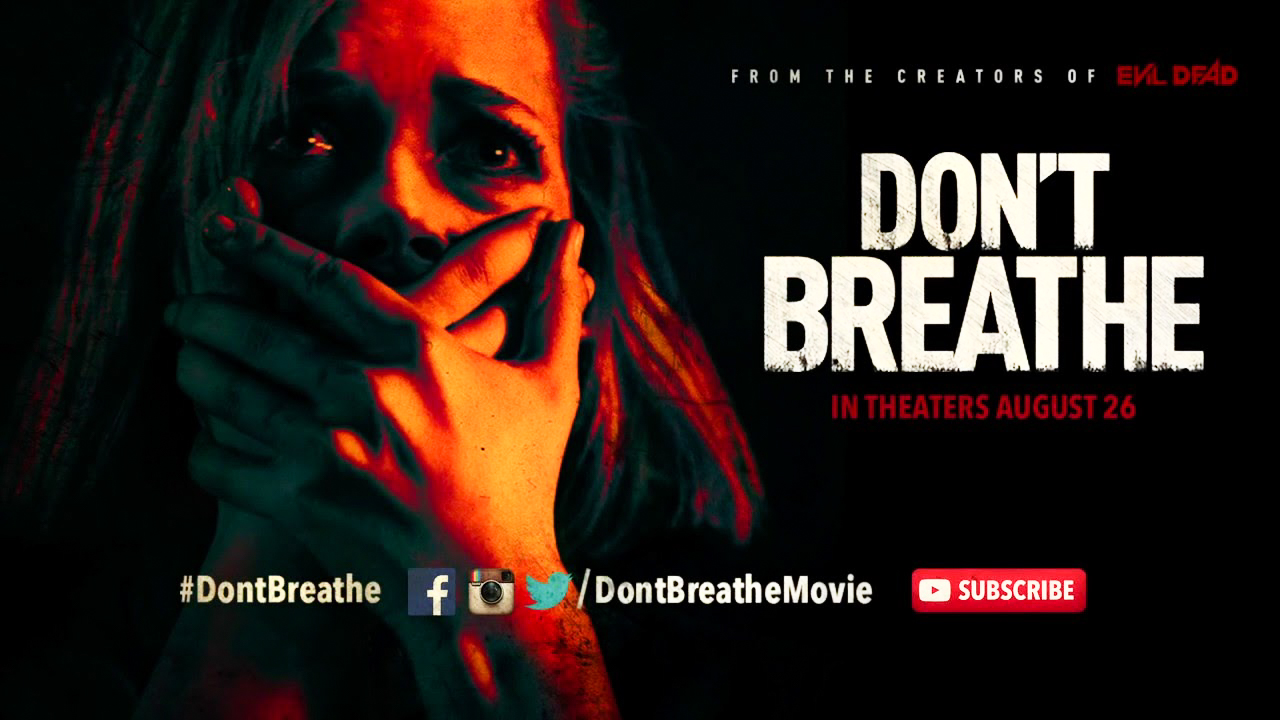
Before May of this year, few people knew that horror thriller “Don’t Breathe” even existed, as the film’s trailer was released a mere three months before its theatrical release. Like any respectable movie trailer, it did not give any plot lines or surprises away to the viewer, but that being said, it generated little to no buzz on the Internet. But amidst a summer of flops, this film proves that the horror genre is untouchable and will always thrive.
The film jolts the viewer with the opening 30-second scene that parallels the classic horror films of the ’80s and ’90s. The short, haunting scene shows a man dragging what seems to be a corpse down a street in broad daylight. Five seconds into the film and the viewers are already at the edge of their seats. The film narrative begins with an introduction of the main characters: Rocky, Alex, and Money, and an exhibition of their relationships. Money (Daniel Zovatto) possesses no redeeming qualities, and Rocky (Jane Levy) robs houses to help finance her sister and neglectful mother. Alex (Dylan Minnette) helps the two because of his crush on Rocky and wants to help her leave behind her criminal life. The viewers learn all of the nuances of the trio’s relationships in less than 20 minutes of the film, yet Rocky’s home life is the only one thoroughly explored, highlighting her importance.
After introducing the characters, the plot kicks into high gear. If the trio is able to rob a blind Army veteran in a desolate neighborhood, they could walk away from their “business” with at least $300,000. The veteran received the money in a settlement from a wealthy young woman, Cindy, after she killed his daughter in a car accident. After Money stakes out the house, the trio decide to break into the house that night. They enter quietly, and Money uses knockout gas on the blind man to ensure that he doesn’t bother them. Alex, questioning the morality of breaking into a blind veteran’s house, leaves early.
What was regarded as an easy bust becomes difficult when the blind man awakens from the knockout gas and catches Money shooting the padlock off the door leading to his basement. To the trio’s surprise, the blind man awakens and violently catches Money in a chokehold. Rocky watches as the blind man shoots and kills Money, and Alex, upon hearing a gunshot, returns to the house. From there, the movie descends into a constant state of tension, with Alex and Rocky desperately hiding from the blind man and his dog, while discovering some horrifying truths about who he really is.
Best known for his work with “Evil Dead,” director Fede Alvarez suspends his viewers with shocking and goose-bump-inducing material that sticks with you long after the credits roll. The shining features of the film are Alvarez’s careful handle on the tension and the impressive editing techniques utilized throughout. Alvarez uses fake-outs and jump scares to stir the viewer. The earliest example features the trio of delinquents in the car staking out the blind man’s house when an aggressive Rottweiler claws at the window trying to attack the kids. The reasoning for its effectiveness stems from the lack of promotion for the film; no viewer was aware that the Rottweiler was in the movie, as it never appeared in any promotions or trailers.
Also as commendable as Alvarez’s directorial techniques is Lang’s portrayal of the blind man. Lang’s performance is reminiscent of those of classic horror monsters, such as Jason from “Friday the 13th.” He demonstrates monstrous ability and strength. He appears at moments where the viewer has counted him out or is not aware of his proximity. In a way, the viewer experiences blindness with the blind man, and this sense of helplessness fuels the tension and the fear factor.
Although the film does a lot of horror techniques right, the faults are apparent in the film’s climax. It is as if this movie shifts from a refreshing original to a cliché with lazy writing. A rightly controversial and disturbing scene, the climax has no real logic or reason for its inclusion in the film. The scene serves as a tired explanation of the blind man’s motivations for his violence toward the trio, but is too shocking and ridiculous to be a satisfying finale.
Alvarez has admitted that he aims to shock his viewers and create buzz. Admittedly, he succeeds in generating the buzz, but it comes at the expense of the narrative. If the film were a little smarter, it could have been a resounding success of the horror genre and a potential classic.
As a drastic reversal of Mike Flanagan’s indie film “Hush,” “Don’t Breathe” fairs exceedingly well with critics and viewers, which goes to show the success of horror-thriller movies. It leaves viewers emotionally spent with a bitter taste in their mouths, but generally satisfied. The film will continue to dominate the box office until the fall films vying for Oscar contingence make their debuts.


Leave a Reply